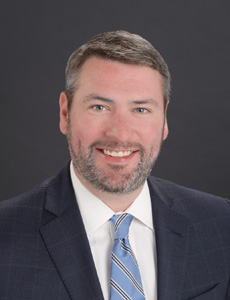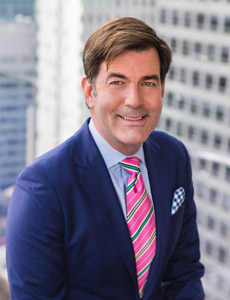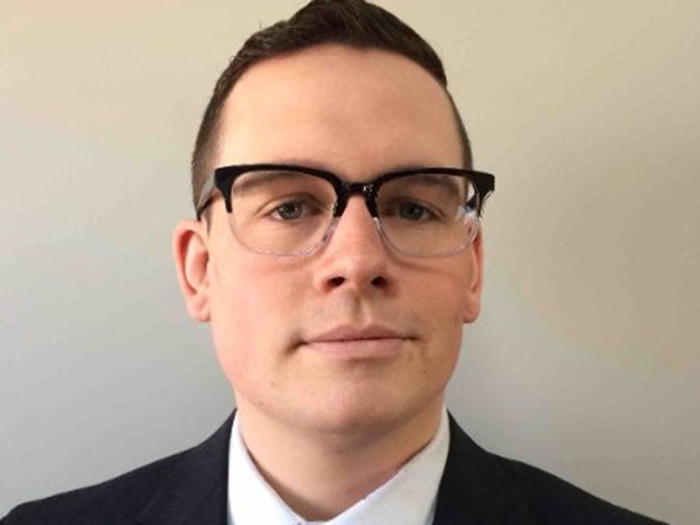Environmental Liability
Warning: These Environmental Risks Are Becoming Tough to Place

Legal settlements involving a popular weed killer are roiling markets.
Determining liability and setting limits in environmental insurance is no easy task.
How many previous owners were there of the pipeline that just broke and released oil into a New York politician’s favorite trout stream?
If a jury concludes that a weed killer also kills people, when do underwriters pack up their tents and exit the space, not to mention the herbicide manufacturers?
A foam that stops planes from catching fire and exploding is a good thing, right? Well, not when its existence in groundwater across the country is setting off jury awards in the hundreds of millions.
These questions and others bedevil insurers, brokers and insureds as they contend with advancing science that unearths more risks and potentially more liability, and a legal environment where corporate errors, real or imagined, can result in jury awards in the 9 and 10 figures.
Here are five areas that are seeing environmental coverage constraints.
1) PFOAs
Polyfluoroalkyl substances, or PFOA’s, were used for decades in non-stick cookware, grease-resistant packaging, textile stain repellent and firefighting foams.
In early 2019, 3M reached an agreement with a North Alabama water authority to pay $35 million to settle claims related to water contamination from the chemicals.
In 2017, DuPont and Chemours reached a $670.7 million settlement with plaintiffs in the town of Parkersburg, West Virginia, around claims that PFOAs in the water supply there gave residents cancer.
“Every single one of the carriers, the toxicologists and consultants I have spoken with, it’s their number one issue,” said Matt Lumelleau, a Houston-based principal with EPIC Insurance Brokers and Consultants.
“The underwriters are looking at it as a new emerging exposure because of litigation and because of regulatory actions and things they have seen on their books,” he added.
The risk stems from the fact that PFOAs can be found all over the place.
“PFOA’s are being found in many large geographical areas and the majority of industrial areas and major cities in the U.S.,” Lumelleau added.
2) Glyphosate
Most infamously known as the active ingredient in the weed killer Roundup, but present in numerous other products, Glyphosate was a worry for product liability underwriters before some recent legal settlements. Now it is a very big worry.
According to Reuters, the German chemical company Bayer, which acquired Roundup maker Monsanto a little more than a year ago, faces more than 13,400 U.S. lawsuits in connection with the herbicide’s alleged cancer risk.
In one recent ruling, a jury in Oakland, Calif. awarded more than $2 billion to a couple who alleged that their continued use of Roundup caused their cancer.
“The testing that has been historically done in the industry focused on Glyphosate, the active ingredient in Roundup for hazard testing to human health and the environment. The allegations seem to point to the active ingredient Glyphosate in conjunction with the other chemicals and surfactants that are used to distribute the product that have caused the issue,” said John O’Brien, the head of environmental for Ascot Insurance US.
“It’s an issue that went from ‘wow this could be bad if Monsanto loses,’ to ‘this is a disaster for the industry’, after they lost,” O’Brien said.
“My understanding from many of the brokers representing the companies that manufacture a derivative of this product is that they have been notified by their insurance companies in the last few months or so that they are no longer going to provide that coverage, so they are making decisions and asking, ‘Do I stay in this business or not?’ O’Brien said.
“So far it seems like more of a product solution claim than a real cleanup situation,” said EPIC’s Lumelleau.
“However, that can certainly change. Carriers are obviously paying attention to that because anytime a chemical is found to create bodily injury and property damage, especially on the manufacturing and supply side, the underwriters can be very wary about those sites,” Lumelleau added.
3) Mold
Nothing new about the risk, other than the fact that carriers are increasingly unwilling to provide much cover for it.
“It’s definitely an area where there is constrained capacity and there are concerns,” said Chris Smy, a global environmental practice leader for Marsh.
“Those concerns are the result of claims experience, both frequency and severity,” he said.
Hospitality and multi-family residential are two areas were carriers are reticent to provide capacity for coverage of mold claims.
“We have seen some of the larger carriers taking some positions around mold,” he said. “The other area where we see it more is health care,” said Smy.
“Some carriers have taken a very risk-averse approach, and are only offering, effectively, sudden and accidental coverage for mold,” he said.
According to numerous sources, rather than looking for a bulk deductible, carriers are adding per-door deductibles to policies to better hedge their risk.
4) Upstream and Midstream Energy
Fracking, drilling and pipeline coverage is another tricky area in environmental insurance.
Ascot’s O’Brien said it’s on the primary layers of coverage for pipelines that capacity is constrained.
“A lot of it has to do with some of the pipeline losses that have happened over the last couple of years,” he said.
“So insurers are hesitant about supporting companies that are going to be in that space,” he added.
“All of the companies that manufacture this product have just been notified buy their insurance companies that they are no longer going to provide that coverage, so they are making decisions and asking, ‘Do I stay in this business or not?’”–John O’Brien, Ascot Insurance USA
“On newer assets, it’s not much of an issue, but when you are looking at older assets, which there are a lot of going back to the World War Two era in this country, that is becoming a harder to place risk class, especially on the primary line,” Lumelleau said.
One pipeline loss scenario could be a pipeline that runs along a stream. The stream bank erodes due to heavy rainwater flow, exposes the pipe and it cracks.
Where a pipeline loss happens impacts its notoriety, O’Brien said. If it’s a break in rural South Dakota, it might be a minor event from a media awareness perspective. If it happens in Santa Barbara, that’s another story, O’Brien said.
There are fairly sophisticated control systems on pipelines, said O’Brien, such as monitoring systems that can detect a pressure drop in a line, which would trigger an alarm and an automatic shutdown. O’Brien, previously with Ironshore, has been underwriting pipelines and upstream exploration and production companies for decades and said he plans to stay very active in the business in his new position at Ascot.
Disposal wells used in drilling and fracking operations are another area where insurance capacity is constrained, said EPIC’s Lumelleau.
“Disposal wells are becoming more difficult,” said Lemelleau.
“There are fewer carriers writing them than there were historically and often we are seeing that carriers are now looking to scale back the amount of limits they are going to place on certain energy assets and exposures,” he said.
Fewer carriers putting out smaller limits has translated to a much more complex task in putting together coverage towers for some energy risks, Lumelleau said.
5) Ten-Year Pollution Liability Policies
Not happening. Or not happening much these days.
“In the energy segment particularly, nobody is writing 10-year deals on midstream assets, downstream assets, upstream assets,” said EPIC’s Lumelleau.
“There’s a few that are still getting it done, but it’s scaled back dramatically since the days of the mid-2000’s,” he said.
“We have this circumstance in the marketplace where transactional risks, Company A buying Company B, often look for a long-term program, sometimes out to 10 years,” said Marsh’s Chris Smy.
“Carriers don’t really like to go out much beyond three or five years for those types of programs,” he said.
“So, for the 10 year programs, the market shrinks,” Smy said.
But on the Upside….
Despite the high-hazard, tough to cover risks that we’ve outlined, both Smy and Lumelleau said there is plenty of capacity out there and plenty of adept environmental underwriters willing to work with clients.
“There are new entries constantly popping up in the marketplace,” Lumelleau said.
“Because of that capacity, the market remains fluid and coverage is generally available for any type of environmental exposure, with limitations obviously for things like the manufacture of PFOAs,” he said.
“There are some great underwriting companies that have done a great job. They’ve got great underwriters, they’ve got good technical folks that understand complex risks, and if they’re working with a diligent broker and client, you can place pretty much environmental exposure that you want out there,” he said.
Ironshore announced on June 6 that it is expanding its Site Pollution Incident Legal Liability Select or (SPILLS) program.
According to a press release, the new endorsement “extends coverage for pollution incidents caused by the insured’s product after that product has been put to its intended use, helping to fill policy coverage gaps, which exclude bodily injury, property damage and cleanup arising from a product.”
“Coverage is being offered as claims-made and reported coverage, which can be offered to both new and existing insureds. Limits are available from $1 million up to $50 million,” the company said.
Ironshore’s SPILLS policy provides customized coverage solutions for the educational, healthcare, hospitality, real estate, oil & gas and manufacturing sectors, the company stated.
Marsh also announced a new environmental product this year, Potentially Responsible Party (PRP) Shield, which is designed to help cover cleanup costs for property owners with possible environmental exposures.
Combining pollution legal liability and cost cap coverage, the product is designed in part to overcome pollution liability hurdles that could dog a property transaction.
In combination with the carrier Axis, the product offers, among other things, insurance capacity in excess of $30 million “when including other excess markets,” the company said in a release.
“There is a hungry market out there for premium and there is a lot of capacity, with the exceptions we’ve talked about,” said Marsh’s Smy.
“We’re starting to see some efforts to broaden appetite to create more premium. That’s my sense of what is going on,” Smy said.













